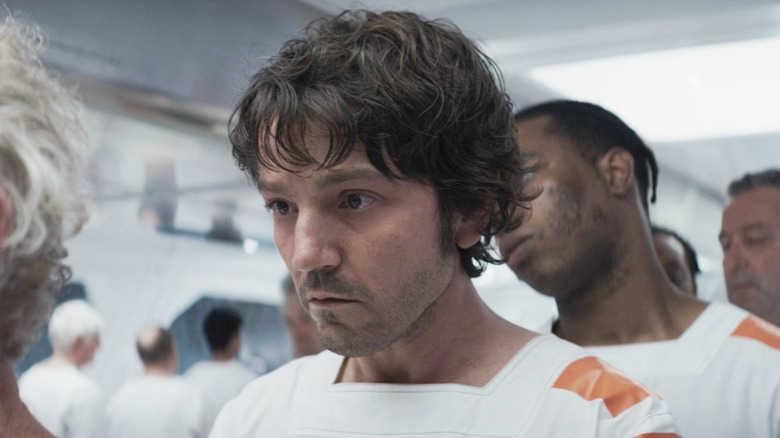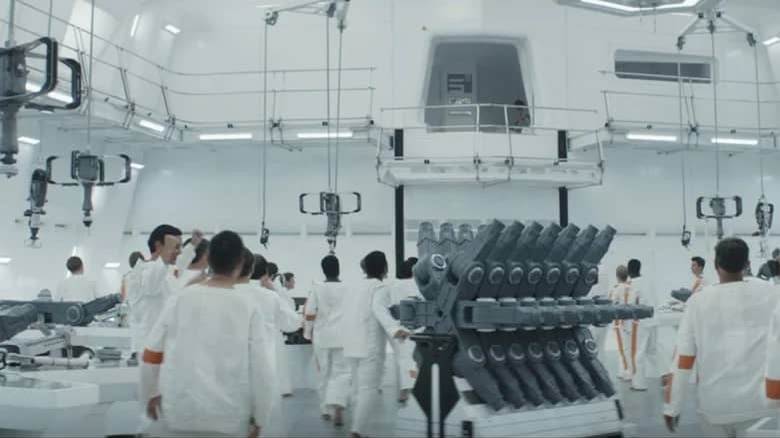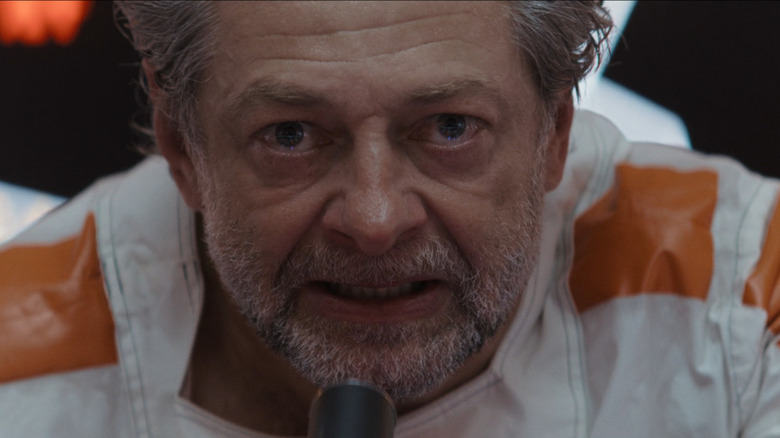Andor's Prison Had To Be Unlike Anything Audiences Had Seen Before
"Andor" is a "Star Wars" story like no other. It's a grounded and bleak drama about radicalization and oppression, a show that finally lets us experience the true evils of the Empire, and a show that illustrates why the Rebellion was necessary. Though it still connected to the rest of the "Star Wars" franchise, "Andor" didn't pander to fan service that felt forced in order to tease some grander plan.
Arguably the highlight of the first season (which also features phenomenal outings like the heist episode) is the prison arc on Narkina 5. This is the most self-contained arc of the season, as it has no direct impact on the larger plot — least of all compared to the Aldhani heist, which brings Cassian Andor's actions to the Empire's attention. And yet, this is the arc that changes everything, not only for Cassian and the show at large, but for the galaxy itself. This is the arc that fires up the Rebellion, making a Rebel out of Cassian and confirming "Andor" season 1 is not just great "Star Wars," but an all-time great season of television.
Everything about those episodes feels like a miracle, with every aspect of the making of the show coming together, firing on all cylinders. There's Andy Serkis' impeccable acting and his phenomenal speech. There's the larger ecosystem of the prison, its relative lack of guards, and the other inmates. And, of course, there's the design of the prison itself, which feels like the closest "Star Wars" has come to replicating George Lucas' directorial debut "THX 1138." It's no surprise, of course, that the prison itself was a big challenge for the show's creative team.
Trying out something new (and sadistic)
The design of the Narkina 5 prison is unlike anything we've seen in "Star Wars" before, a symbol of the cruelty and oppression of the Empire, and one of the most sadistic locations in recent TV memory. You have electrified floors, which means escape is near impossible and there don't have to be as many guards, and you have a system of punishment and reward that fosters a sick competition.
Speaking to Rolling Stone, showrunner Tony Gilroy explained the guiding principle behind the prison arc of "Andor." According to Gilroy, the show's creative team tried their darnedest not to do something that we had seen before:
"If we can't figure out something that nobody's ever done before, we're gonna do something else. We're not just gonna do the same old s*** in a prison."
The key to this whole thing was the electrified floors. That simple idea became the guiding point for both the story around the prison, and the design of the complex itself, with production designer Luke Collins even joining the writers' room for five days to plan it out. It would take another 10 months to build the prison, redesign it, and rewrite it into the rest of the show. Still, at that point, "no one [was] thinking thematically about what [the prison] means," Gilroy admitted.
It is the sign of an effective design that you know everything you need to know about the prison and about the Empire just by looking at it, and how clean, empty, and ultimately oppressive it is. Once the design was in place, it was time to figure out the prison's thematic meaning. Ultimately, the show's writers realized every story arc in the series has one thing in common: revolution.
The Spartacus moment
Narkina 5 is not just a big turning point for Cassian because it makes him invested in the fight against the Empire, but because it turns him into a revolutionary leader. It is not enough for him to fight back for the first time, but he has to lead all while not being in charge.
"You don't have to stand up in front, but to get someone else to stand up in front," Tony Gilroy noted, describing the role of a true leader. It is Kino, the Spartacus of this revolt, who serves that purpose, motivating all the prisoners to stand up with one of the best speeches of the decade. It cannot be Cassian who does this; it had to be Kino, the man who had worked side by side with the other prisoners for years already, leading them and earning their trust in the process. Gilroy explained:
"Getting Kino to make that speech and finding him as the mouthpiece — that's the beginning of Spartacus. Our initial impulse was, how do we do it differently? Then there was all the mechanics, and then you get to the end and it's like, Wow, this fits inevitably with what we're supposed to be doing."
The reason this works as well as it does is because of the struggle, both internally and externally. Externally, this is about Cassian getting out of the prison so the plot can continue, but internally, there's more. We know Cassian is eventually going to turn into a proper revolutionary, a man who kills for his cause and is willing to sacrifice everything, including himself, for his beliefs. This is the moment he becomes involved in something greater than himself, when he stops thinking about self-preservation and starts to think about something far bigger.


